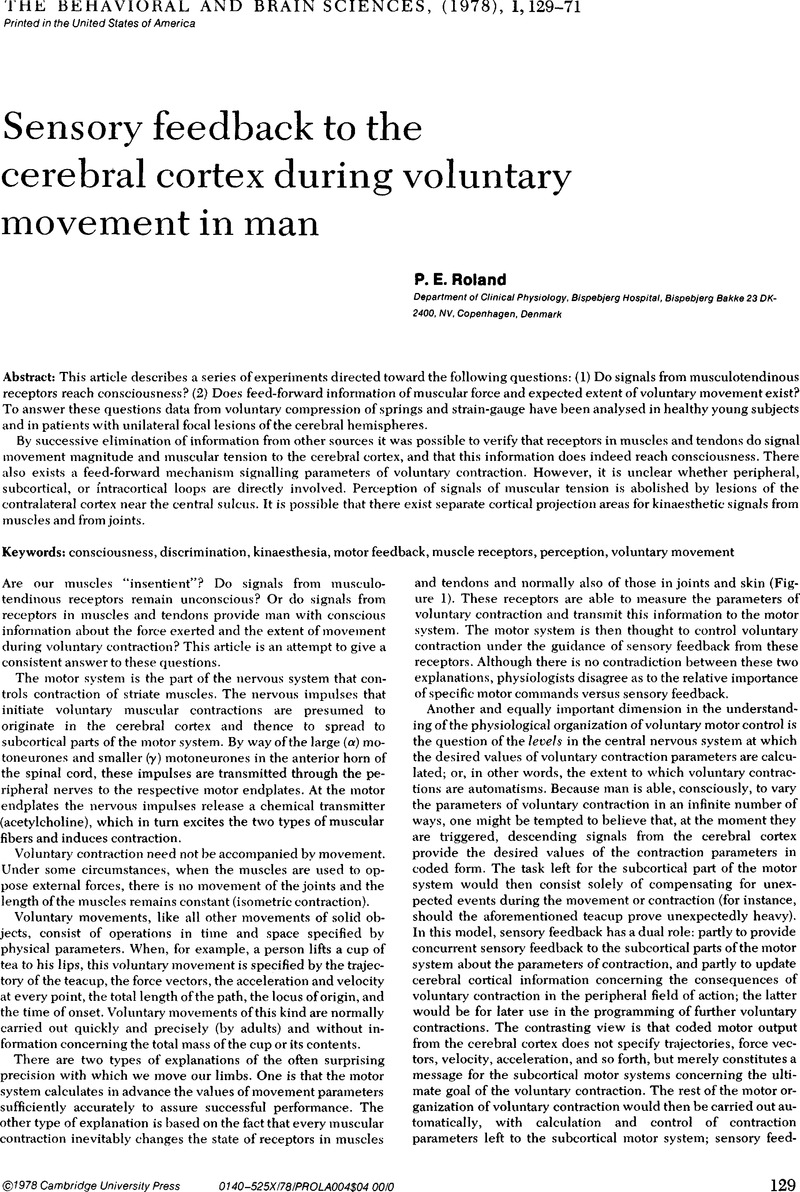No CrossRef data available.
Article contents
Sense of effort and sense of muscular tension
Published online by Cambridge University Press: 04 February 2010
Abstract
An abstract is not available for this content so a preview has been provided. Please use the Get access link above for information on how to access this content.

- Type
- Open Peer Commentary
- Information
- Copyright
- Copyright © Cambridge University Press 1978
References
REFERENCES
DeGail, P., Lance, J. W. and Neilson, P. D. (1966). Differential effects on tonic and phasic reflex mechanisms produced by vibration of muscles in man. Journal Neurology Neurosurgery and Psychiatry 29:1–11.CrossRefGoogle Scholar
Hagbarth, K.-E., and Eklund, G. (1966). Motor effects of vibratory muscle sntimuli in man. In: Muscular Afferents and Motor Control, ed. Granit, R.. Stockholm: Almqvistfc Wiksell. Pp. 177–186.Google Scholar
Holmes, G. (1917). The symptoms of acute cerebellar injuries due to gunshot injuries. Brain 40:461–535.CrossRefGoogle Scholar


